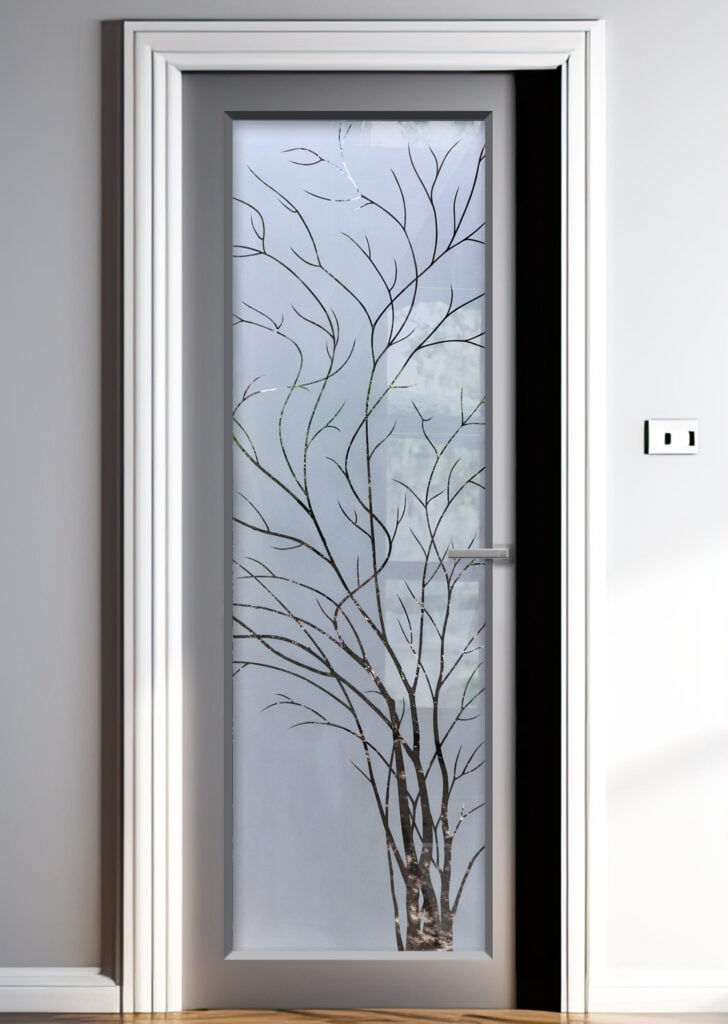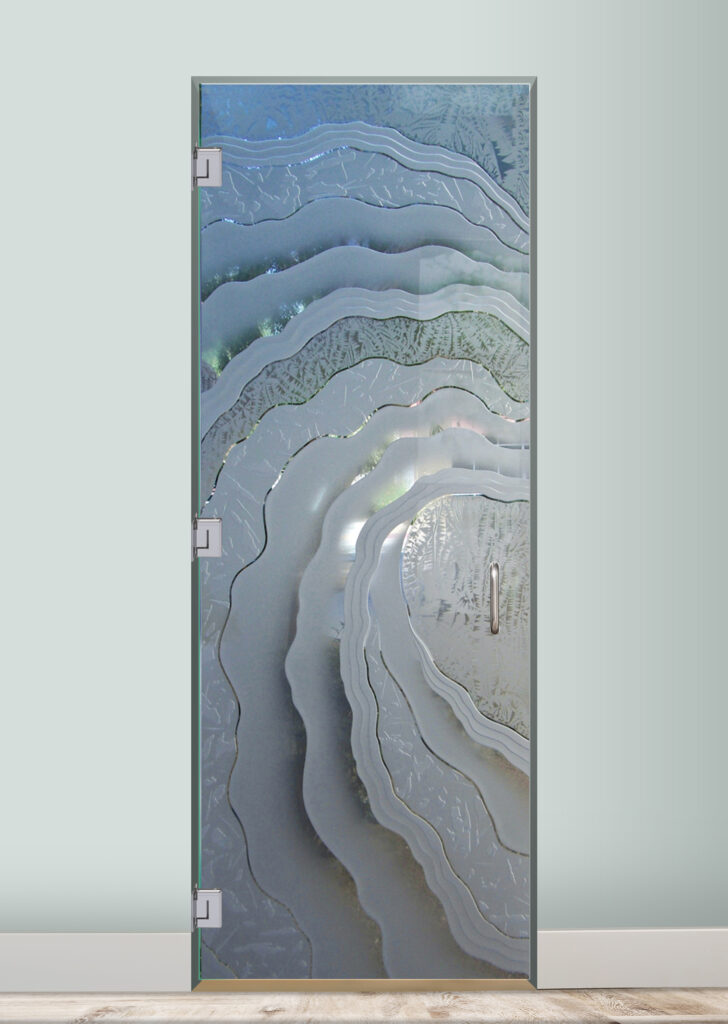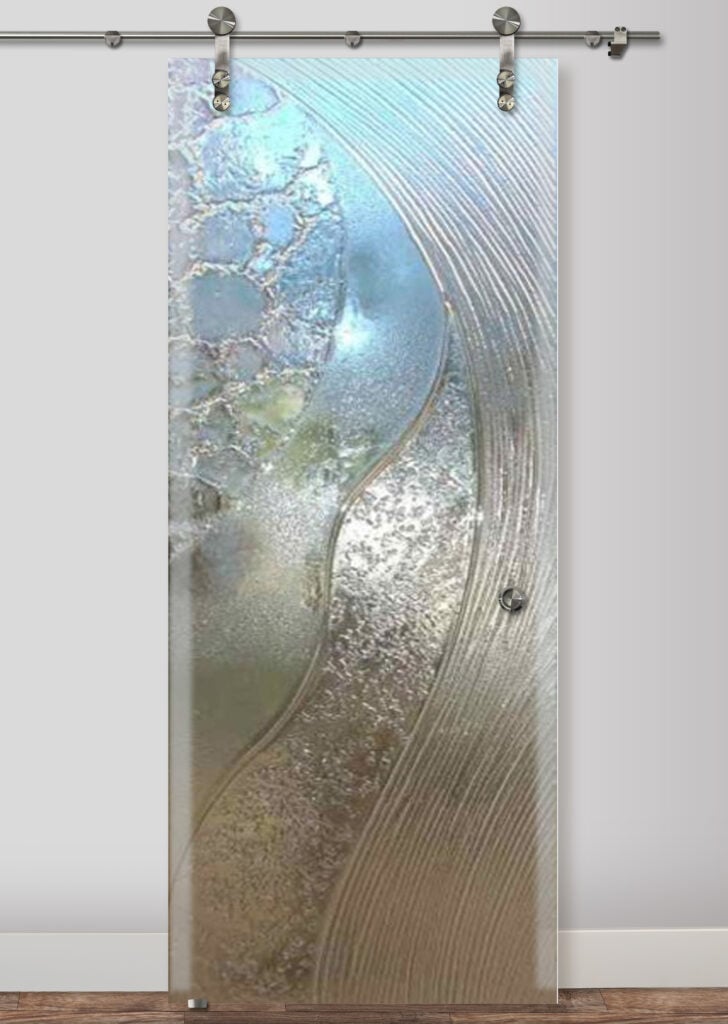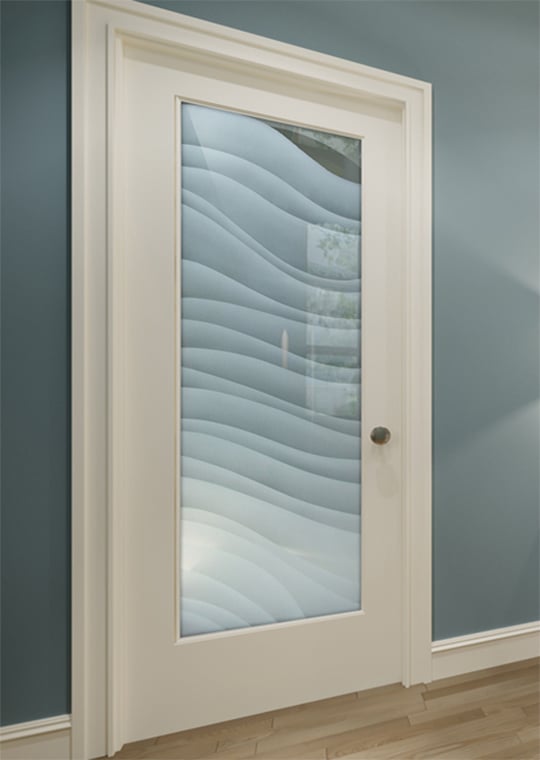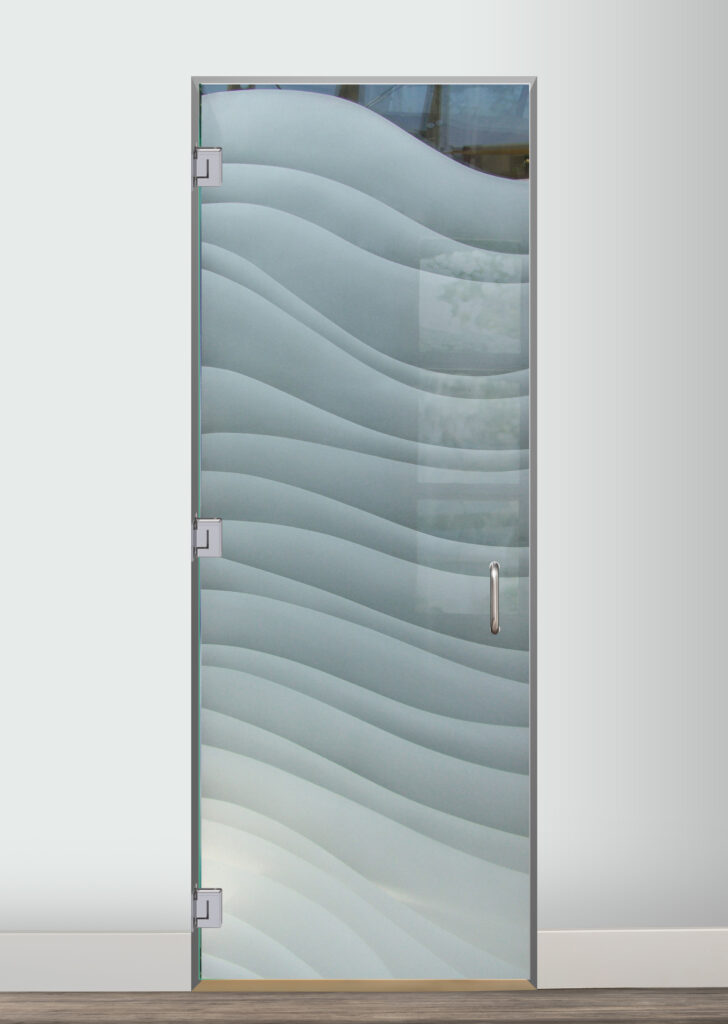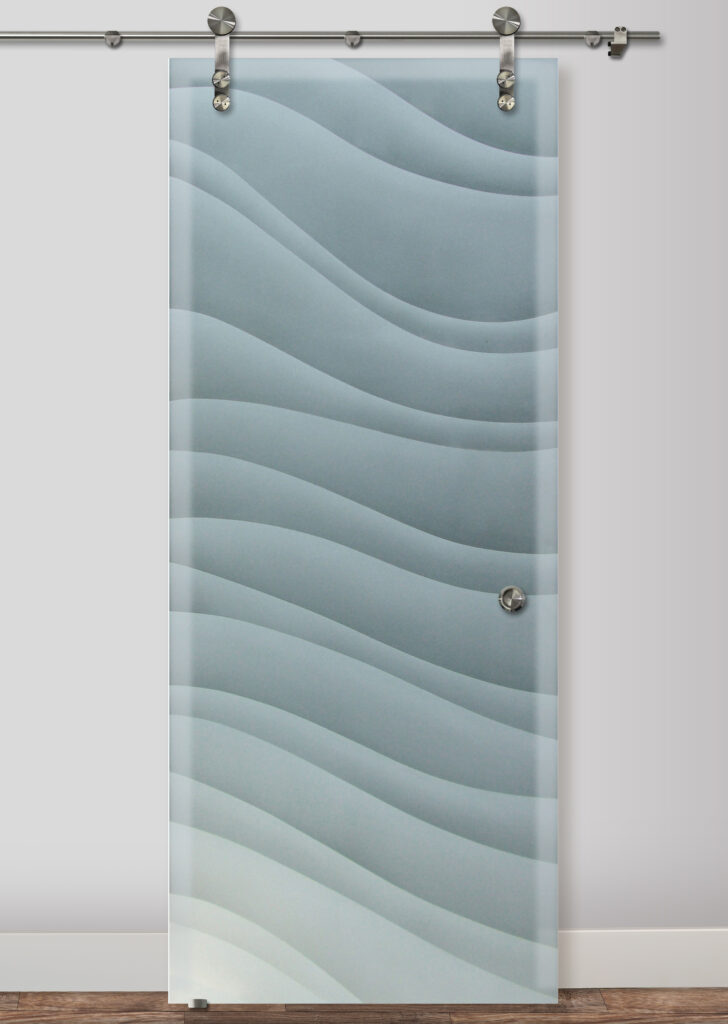Interior Glass Doors: Top 16 FAQs
Welcome to the latest blog post from Sans Soucie Art Glass, where our expertise in crafting exquisite interior glass doors has been unparalleled since 1976. As industry leaders, we’ve dedicated ourselves to not only creating beautiful, functional frosted glass art but we also love to share our knowledge with you. In this post, we delve into the most common questions about interior glass doors. From the benefits and safety aspects to style choices and maintenance tips, we’re here to provide you with the insights and answers you need, drawing from our extensive experience in the field. Whether you’re considering the elegant addition of a glass door to your home or simply curious about the possibilities, let’s explore the world of interior glass doors together.
What are the Benefits of Interior Glass Doors?
Interior glass doors offer a multitude of benefits, making them a popular choice for contemporary home designs. Their primary advantage is the enhancement of natural light flow within a home, creating a bright and welcoming atmosphere. This feature is particularly beneficial in smaller spaces or areas with limited natural light, as glass doors can make these spaces appear larger and more inviting. Additionally, interior glass doors serve as elegant design elements, adding a touch of sophistication and modernity to any space. They also provide the practical benefit of visual connectivity between rooms, allowing for an open-plan feel while maintaining distinct room divisions. This aspect is especially useful in homes where supervision of children or maintaining a social connection between spaces is important. Moreover, glass doors can be energy efficient, helping to maintain temperature consistency across different rooms without obstructing light flow.
What are the Benefits of Interior Glass Doors with Frosted Glass?
Frosted glass doors enhance privacy while allowing light to filter through, offering a blend of seclusion and brightness. They also add a modern, stylish touch to interiors.
Do Interior Glass Doors Need to Be Safety Glass?
Yes. Safety glass, such as tempered or laminated glass, is designed to minimize the risk of injury in the event of breakage. Tempered glass, for instance, is heat-treated to be much stronger than regular glass. If it does break, it shatters into small, granular chunks instead of sharp shards, significantly reducing the risk of injury. Laminated glass, on the other hand, consists of a layer of plastic between two glass panes, ensuring that if the glass is broken, the pieces remain adhered to the plastic, again reducing the likelihood of injury. Using safety glass for interior doors is not only a safety measure but often a compliance requirement with building codes and regulations.
What Kind of Glass is Used for Interior Glass Doors?
Tempered glass is the most commonly used glass for interior glass doors. Known for its safety and strength, and laminated glass, renowned for its durability and sound-reducing properties. For added privacy and decorative appeal, frosted, etched, or textured glass is often chosen. These types offer varying degrees of translucency, providing privacy while still allowing light to pass through. Additionally, there are options like stained glass for a more artistic and colorful approach, or clear glass for a minimalist, modern look. The choice of glass type can significantly impact the door’s appearance, privacy level, and light transmission, making it an important consideration in the selection process.
How Can You Tell if a Door is Tempered Glass?
Look for the bug! A tempered glass “bug” is a small, etched marking on tempered glass, indicating that the glass has been strengthened for safety.
What are the Different Types of Interior Glass Doors?
Interior glass doors come in a variety of styles, each offering unique aesthetic and functional benefits. Here’s the top 5 most popular types of interior glass doors:
- French Doors:
- Characterized by their multiple glass panes and classic appeal, ideal for creating an elegant transition between rooms.
- Sliding Glass Doors:
- Space-saving and contemporary, perfect for areas with limited space.
- Pocket Doors:
- Slide into the wall, offering a space-efficient option and a sleek solution for tight spaces.
- Bi-fold Doors:
- Consist of several panels that fold against each other, suitable for areas where a full opening is occasionally needed.
- Pivot Doors:
- Rotate on a pivot rather than traditional hinges, providing a modern, statement-making option.
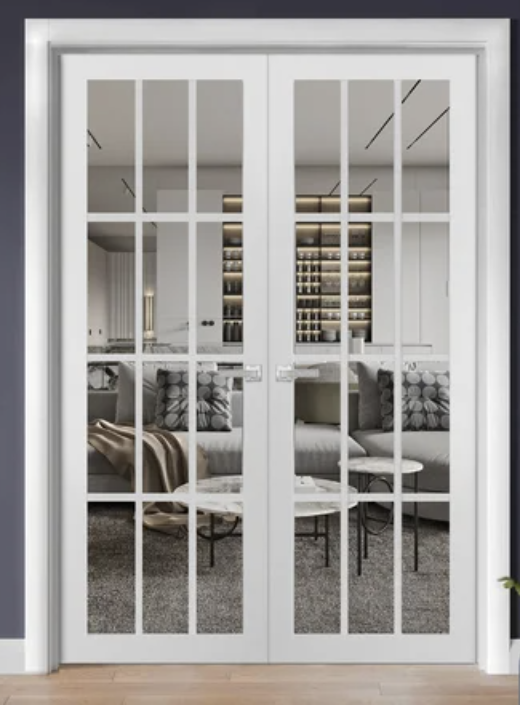
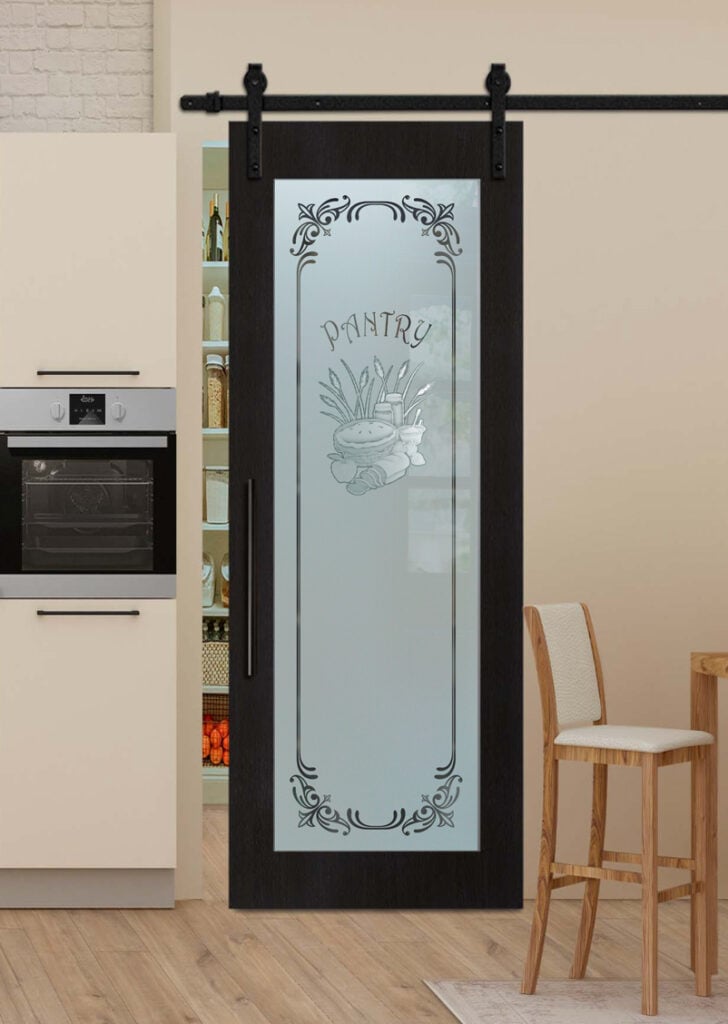
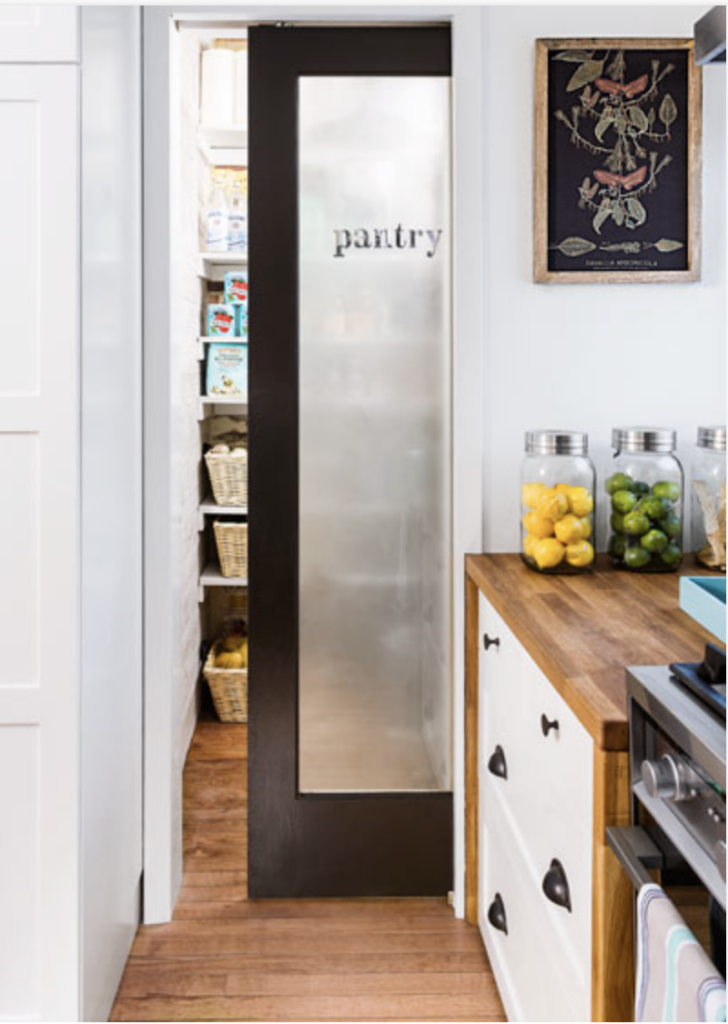
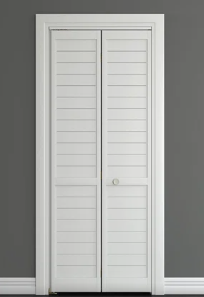
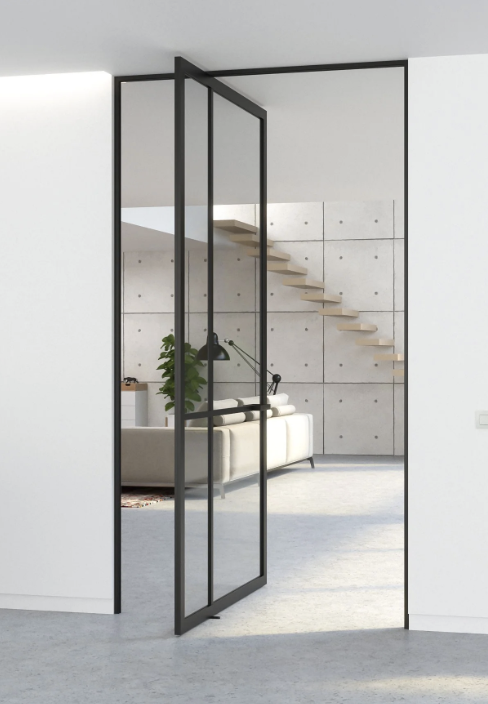
At Sans Soucie Art Glass, we specialize in a select range of interior glass doors, tailored to meet the diverse needs and aesthetic preferences of our customers. Here are the types of interior glass doors we offer, in order of popularity:
- Slab or Prehung Interior Doors:
- Highly sought after for their versatility and ease of integration into various architectural styles.
- Available as a slab (the door itself) or as a prehung unit (including the frame and necessary hardware), making installation straightforward and efficient.
- All Glass Hinged or Swinging Glass Doors:
- Provide a sleek, modern look and feel, perfect for contemporary homes.
- Operate similarly to traditional hinged doors but with the added elegance and transparency of glass.
- Glass Barn Doors:
- Combine the rustic charm of barn door styling with the modernity of glass.
- Slide along a top-mounted track, offering an excellent space-saving solution and adding a unique design element to any room.
The popularity of our Slab and Prehung Interior Doors is closely matched by the other two types, making them all equally desirable choices for homeowners looking to enhance their living spaces with the beauty and functionality of glass.
What is a Standard Size of an Interior Door?
The most common size for an interior door in the U.S. is 80 inches tall (6 feet 8 inches) and 28 inches wide (2 feet, 4 inches), often referred to as a “2/4 x 6/8 door.” Widths, however, can vary, with standard options including 24, 28, 30, 32, and 34 inches. Door thickness typically ranges from 1 3/8 inches to 1 3/4 inches, the latter being common for heavier hardware or soundproofing needs.
In addition to understanding the general standard sizes for interior doors, it’s important to recognize the specific standard dimensions for the various types of interior glass doors we offer at Sans Soucie Art Glass. Each type has its own standard size, tailored to fit common residential openings and ensure a seamless installation process:
- Slab or Prehung Interior Doors:
- Versatile and easily integrated into various architectural styles.
- Available as a slab (just the door) or as a prehung unit (including the frame and necessary hardware).
- Specific standard sizes for different rooms:
- Pantry Doors: Standard size is 24 inches wide x 80 inches tall, fitting most pantry entrances while providing sufficient space for storage access.
- Laundry Room Doors: Standard size is 32 inches wide x 80 inches tall, offering a wider opening for easy movement of laundry appliances and baskets.
- Bathroom Doors: Standard size is 28 inches wide x 80 inches tall, balancing privacy and space efficiency in bathroom layouts.
- Bedroom Doors: Standard sizes are most often 28 inches, 30 inches, or 32 inches wide x 80 inches tall, accommodating various room sizes and personal preferences.
- Office Doors: Typically, the standard size is 30 inches or 32 inches wide x 80 inches tall, providing a balance between a spacious entrance and efficient use of office space.
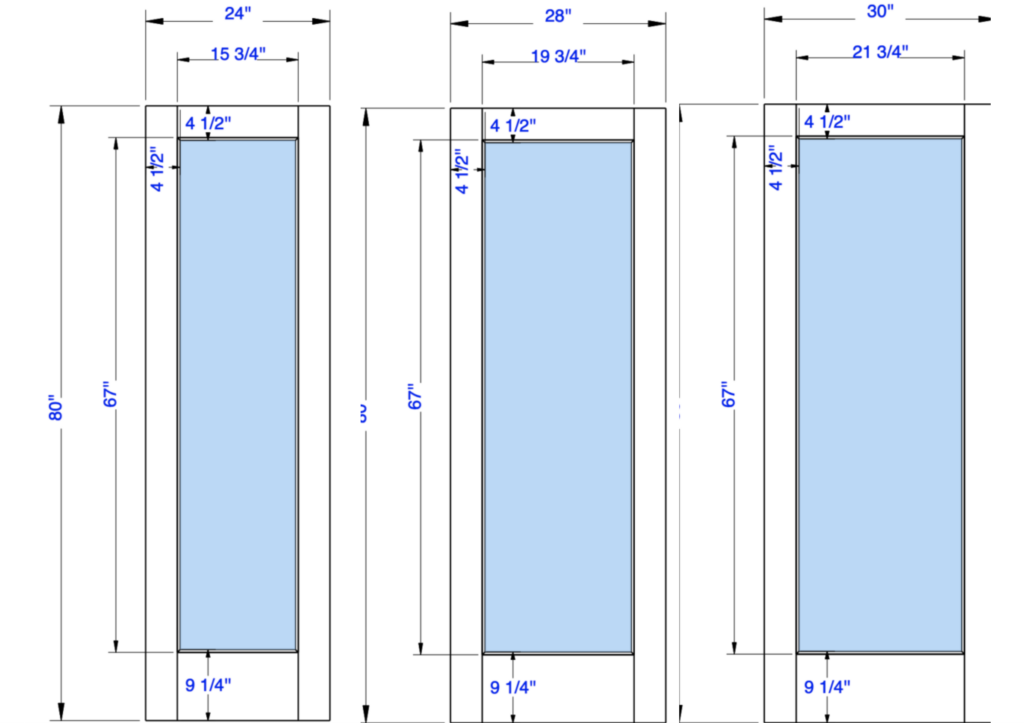
These specific dimensions for Slab and Prehung Interior Doors ensure that each door is perfectly suited to its intended space, both in terms of functionality and aesthetic appeal. At Sans Soucie Art Glass, we recognize the importance of having the right door size for each room, and we offer a range of options to meet these diverse needs.
- Hinged or Swinging All Glass Doors:
- Standard Size: 28 inches wide x 80 inches tall
- The standard size for our all-glass hinged doors matches that of our slab and prehung doors, ensuring consistency and ease of installation in standard door frames.
- Glass Barn Doors:
- Standard Size: Made to fit over an opening of 28 inches wide x 80 inches tall, with the actual door size being 32 inches wide x 81 inches tall.
- The slightly larger size of our glass barn doors allows for the necessary overlap and hardware accommodation, ensuring smooth operation and full coverage of the doorway.
These standard sizes are designed to meet the needs of most residential installations. However, at Sans Soucie Art Glass, we also recognize the importance of customization. We are equipped to tailor our doors to fit non-standard sizes, ensuring that our clients receive a product that not only meets their aesthetic desires but also fits perfectly within their unique spaces.
Can a Bedroom Door Have Glass?
Yes, glass bedroom doors are both stylish and practical. They let in natural light, making the room feel larger, and options like frosted or tinted glass provide privacy while maintaining brightness.
Can You Put Glass in an Interior Door?
Yes, you can add glass to an existing door to enhance light and modernize your space. This involves cutting a panel and installing a glass insert, which can be clear, frosted, or etched for style and privacy. Professional installation is recommended for safety and structural integrity.
Are Glass Doors a Good Idea?
Absolutely, glass doors are an excellent idea for several reasons, especially when it comes to enhancing the interior of a home or office. Firstly, they are a brilliant way to introduce more natural light into a space, making rooms feel brighter and more spacious. This can be particularly beneficial in areas that lack sufficient windows or in smaller spaces where natural light can make a significant difference.
Secondly, glass doors add a modern and elegant aesthetic to any interior. They can serve as a statement piece or blend seamlessly with the existing décor, depending on the design and type of glass used. Whether it’s a frosted pattern for privacy or clear glass for an unobstructed view, there’s a style to suit every taste.
Moreover, glass doors can be highly functional. They are ideal for creating a sense of openness and flow between rooms while still providing the option to close off areas when needed. This is especially useful in homes with open floor plans or in office environments where flexible space utilization is key.
Are Interior Glass Doors Soundproof?
No, they are not completely soundproof but they DO create a great sound buffer. Double-glazed or laminated glass doors are better at reducing noise compared to single-pane doors. For higher sound isolation, additional measures like specialized seals can be implemented.
What is the Cost Range for Interior Glass Doors?
Here’s a list of the most popular interior glass doors, by cost from lowest to highest:
- Slab Interior Doors (Basic Glass):
- These are typically the most budget-friendly option, consisting of just the door slab without any frame or hardware. They are ideal for those who are looking to replace or upgrade an existing door using existing hardware and framing.
- Prehung Interior Doors (Basic Glass):
- Slightly more expensive than slab doors, prehung doors include the frame and necessary hardware. They are a convenient choice for new installations or when replacing an entire door unit.
- Pocket Glass Doors (Basic Glass):
- These doors are designed to slide into the wall, saving space and offering a sleek look. The cost includes the door and the sliding mechanism but can increase with more complex installation requirements.
- Bi-fold Glass Doors (Basic Glass):
- Bi-fold doors consist of several panels that fold against each other. They are great for closets and small spaces. The pricing varies based on the number of panels and the complexity of the folding mechanism.
- Glass Barn Doors (Basic Glass):
- Trendy and stylish, glass barn doors slide along a top-mounted track. They are generally more expensive due to the larger size of the glass and the specialized track system.
- Hinged or Swinging All Glass Doors (Basic Glass):
- These doors operate like traditional hinged doors but are made entirely of glass. They tend to be on the higher end of the price spectrum due to the thickness and quality of glass required for structural integrity.
- Pivot Glass Doors (Basic Glass):
- Pivot doors rotate on a pivot rather than traditional hinges and are a statement piece in any space. They are typically the most expensive due to their unique hardware, installation requirements, and the often larger size of the door.
Remember, the final cost of each door type can vary based on factors like glass type, door size, hardware choices, and installation complexity. This list provides a general guideline based on standard door options without specialized designs or customizations.
What is the Cost Range for Interior Glass Doors with Frosted Glass Designs?
The average range as of December 2023 is approx. $1,600 to $2,700, including Shipping across the US. At Sans Soucie Art Glass, we pride ourselves on offering a range of exquisite door options, each featuring our signature frosted glass effects and consistent design quality. Using our Dreamy Waves design in our 2D Effect, here is a sample price as of December 2023, for each type of door. These prices include Freight shipping to your doorstep! Whether you’re looking for a Slab or Prehung Interior Door, an All Glass Hinged or Swinging Door, or a stylish Glass Barn Door, you’ll find that our pricing reflects the artistry, craftsmanship, and quality materials that go into every piece we create.
Can a Door with Glass be Fire Rated?
Yes, doors with glass can be fire-rated, provided they are constructed with materials that can withstand high temperatures for a specified period. Fire-rated glass doors are made with special glass, such as wired, ceramic, or specially tempered glass, which can resist heat and prevent the spread of flames and smoke.
How Can I Upgrade an Interior Glass Door?
Upgrading an interior glass door can be achieved in several ways, depending on the desired outcome. For aesthetic upgrades, applying decorative films, frosting, or etching can add privacy and a new visual element to the door. These treatments come in various designs and patterns, allowing for customization to match the room’s decor. Hardware upgrades, such as changing handles, locks, or hinges, can also significantly impact the door’s look and functionality. For enhanced security, installing smart locks or reinforced glass can be considered. Energy efficiency can be improved by opting for double-glazed or low-E glass, which helps in maintaining temperature balance and reducing energy costs. For sound insulation, consider upgrading to laminated or acoustic glass. Each upgrade offers its own set of benefits and can be tailored to meet specific needs and preferences.
What Are the Latest Trends in Interior Glass Door Designs for 2024?
The latest trends in interior glass door designs are diverse, catering to a range of aesthetic preferences. Currently, popular styles include:
- Farmhouse: Characterized by a blend of rustic charm and modern simplicity, often featuring wooden frames with glass panels.
- Beach: Light, airy designs that evoke a sense of coastal serenity, often using frosted or lightly tinted glass.
- Modern: Sleek and minimalistic, with clean lines and often employing clear or subtly textured glass.
- Rustic: Emphasizing natural beauty and ruggedness, typically incorporating elements like distressed wood and simple glass.
- Western: Western decor is characterized by elements like natural wood, leather, and earthy tones, it often features accents such as horseshoes, antlers, and Native American patterns.
- Art Deco: Art Deco designs are known for their geometric shapes and elegant detailing.
- African: Inspired by African motifs and textures, these designs can include intricate patterns and earthy tones.
- Tropical: These designs bring in elements of tropical flora and fauna, often using etched or stained glass for a vibrant effect.
- Traditional: Timeless designs that focus on elegance and classic details, often with ornate glass etching or beveling.
These trends reflect a blend of cultural influences and personal tastes, allowing homeowners to choose designs that not only enhance their space but also reflect their personal style.

Sans Soucie Art Glass: A Legacy of Craftsmanship and Innovation
Family-owned and operated since its inception in 1976, Sans Soucie has solidified its place as the industry frontrunner in the realm of sandblast frosted glass, carved, and hand-painted glass. Pioneering the art of turning ordinary glass into breathtaking “Works of Art Captured in Glass”, we have garnered acclaim both nationally and worldwide.
Sans Soucie has proudly undertaken tens of thousands of residential projects, delighting homeowners not just in the U.S., but internationally as well. Their portfolio also showcases an impressive range of commercial commissions, serving diverse sectors such as the service industry, hospitals, restaurants, museums, hotels, and libraries. Notably, Sans Soucie’s exquisite craftsmanship even graces a tribute room aboard the USS George HW Bush CVN 77.
In 2010, Sans Soucie ventured into selling slab and prehung doors, further solidifying their presence in the home decor space. Recognizing the complexities associated with slab and prehung doors, Sans Soucie introduced their innovative Door Designer Tool. This user-friendly tool has since transformed door designing into a fun and effortless experience, allowing homeowners everywhere to craft doors that resonate with their personal style.
